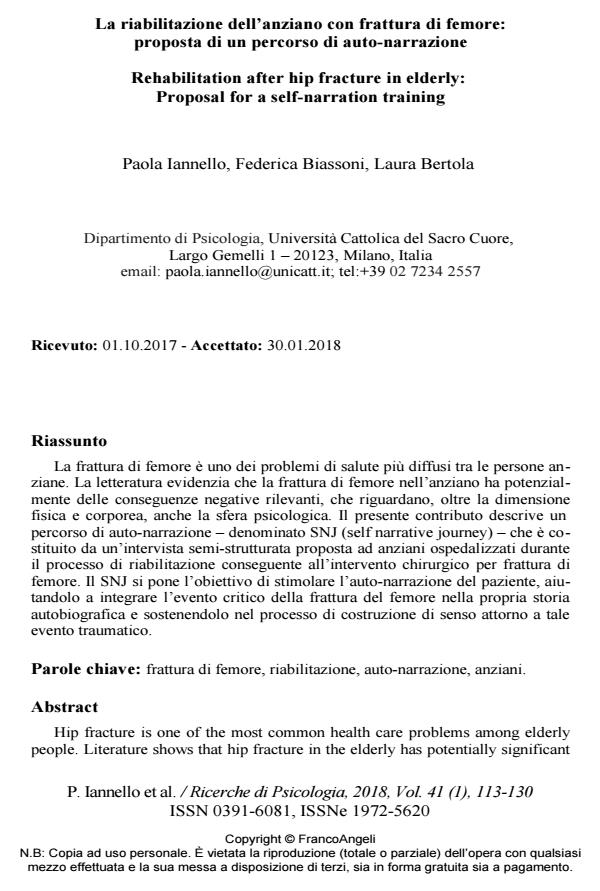La riabilitazione dell’anziano con frattura di femore: proposta di un percorso di auto-narrazione
Titolo Rivista RICERCHE DI PSICOLOGIA
Autori/Curatori Paola Iannello, Federica Biassoni, Laura Bertola
Anno di pubblicazione 2018 Fascicolo 2018/1
Lingua Italiano Numero pagine 12 P. 113-124 Dimensione file 234 KB
DOI 10.3280/RIP2018-001009
Il DOI è il codice a barre della proprietà intellettuale: per saperne di più
clicca qui
Qui sotto puoi vedere in anteprima la prima pagina di questo articolo.
Se questo articolo ti interessa, lo puoi acquistare (e scaricare in formato pdf) seguendo le facili indicazioni per acquistare il download credit. Acquista Download Credits per scaricare questo Articolo in formato PDF

FrancoAngeli è membro della Publishers International Linking Association, Inc (PILA)associazione indipendente e non profit per facilitare (attraverso i servizi tecnologici implementati da CrossRef.org) l’accesso degli studiosi ai contenuti digitali nelle pubblicazioni professionali e scientifiche
La frattura di femore è uno dei problemi di salute più diffusi tra le persone anziane. La letteratura evidenzia che la frattura di femore nell’anziano ha poten-zialmente delle conseguenze negative rilevanti, che riguardano, oltre la dimensio-ne fisica e corporea, anche la sfera psicologica. Il presente contributo descrive un percorso di auto-narrazione - denominato SNJ (self narrative journey) - che è costituito da un’intervista semi-strutturata proposta ad anziani ospedalizzati durante il processo di riabilitazione conseguente all’intervento chirurgico per frattura di femore. Il SNJ si pone l’obiettivo di stimolare l’auto-narrazione del paziente, aiutandolo a integrare l’evento critico della frattura del femore nella propria storia autobiografica e sostenendolo nel processo di costruzione di senso attorno a tale evento traumatico.
Parole chiave:Frattura di femore, riabilitazione, auto-narrazione, anziani
Paola Iannello, Federica Biassoni, Laura Bertola, La riabilitazione dell’anziano con frattura di femore: proposta di un percorso di auto-narrazione in "RICERCHE DI PSICOLOGIA " 1/2018, pp 113-124, DOI: 10.3280/RIP2018-001009